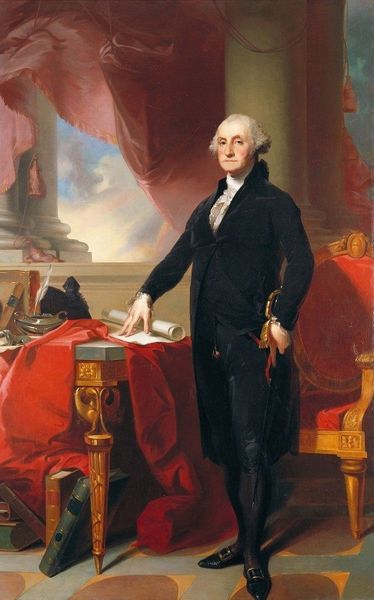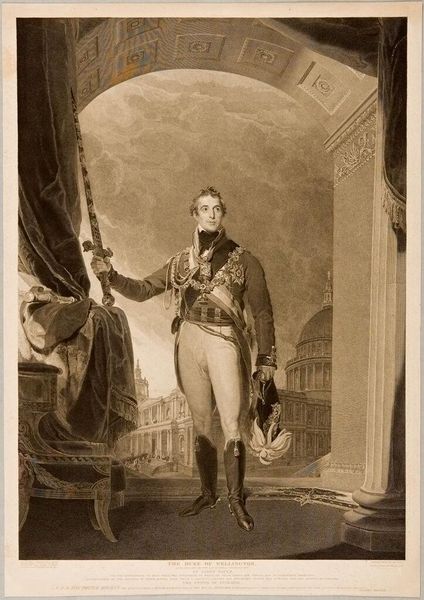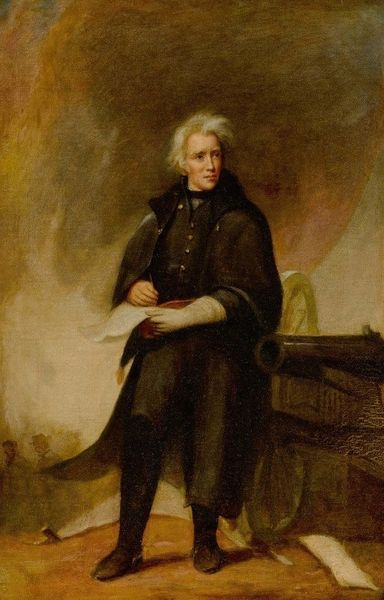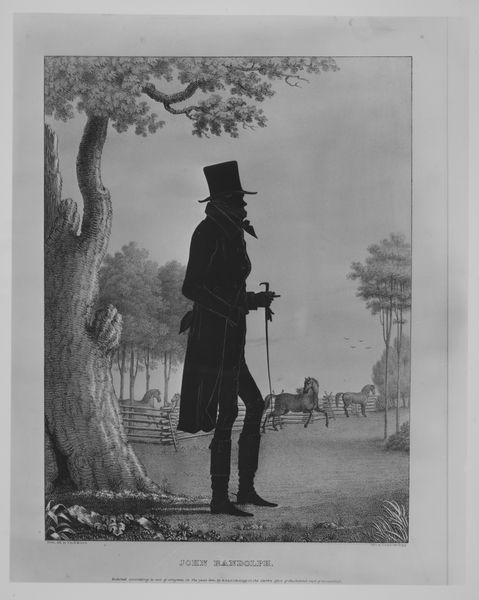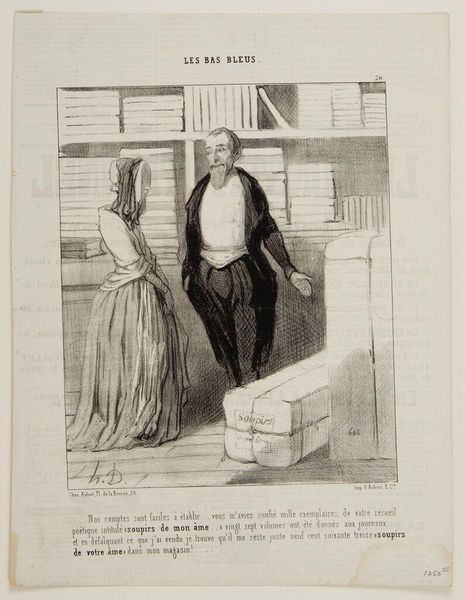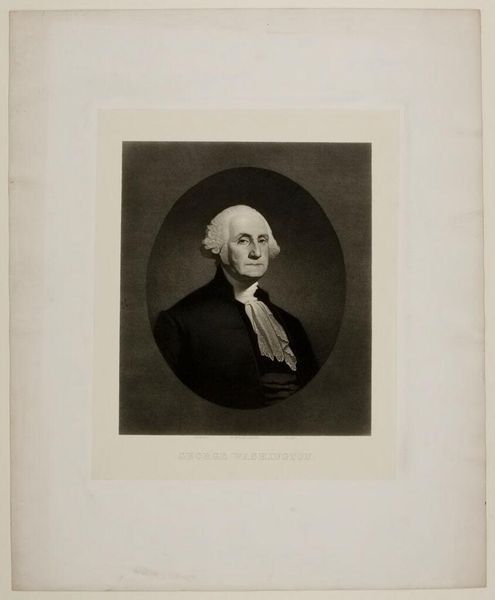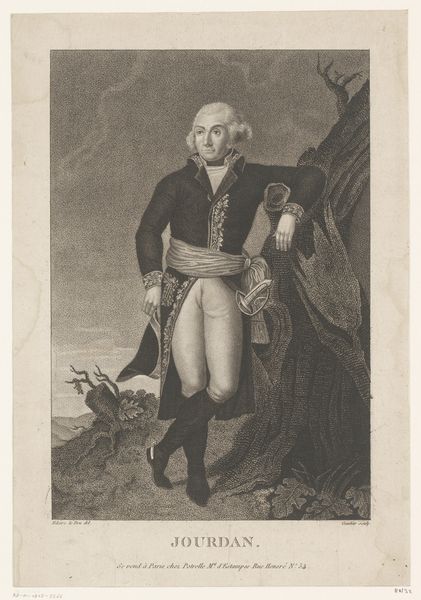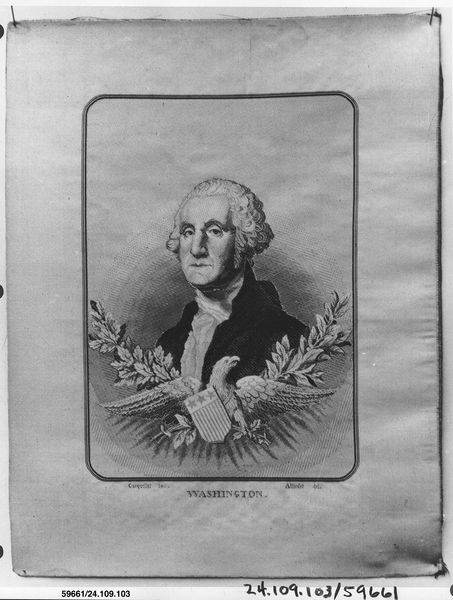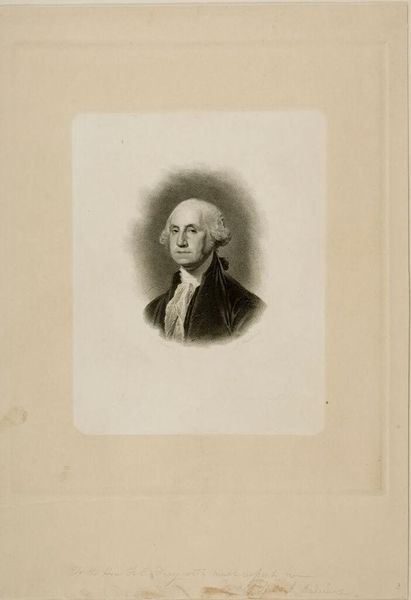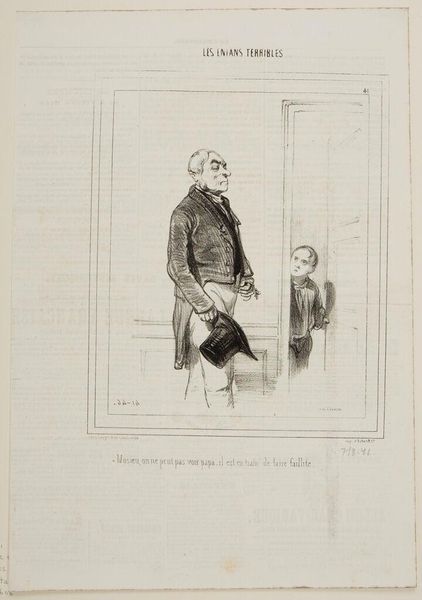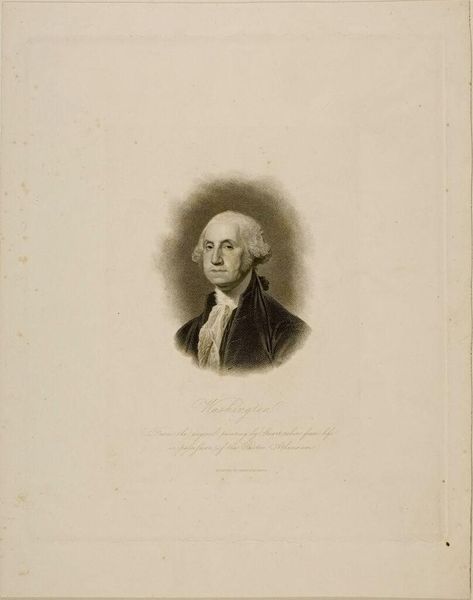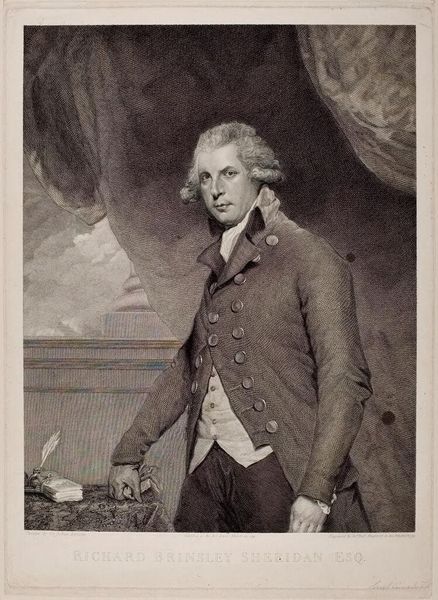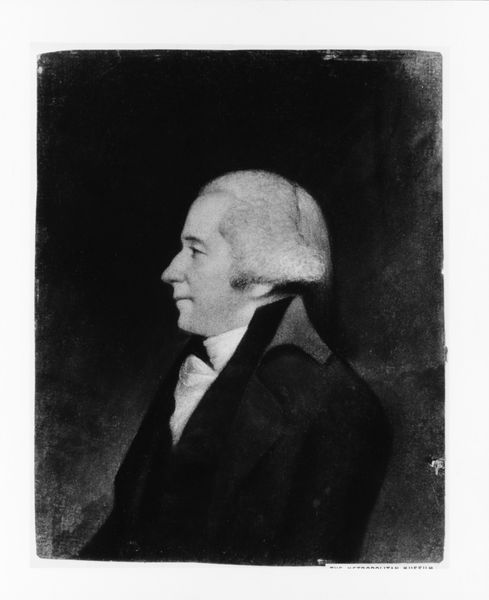
lithograph, print
#
portrait
#
16_19th-century
#
lithograph
# print
#
romanticism
Copyright: Public domain
Editor: This is "Henry Clay of Kentucky," a lithograph created by Currier and Ives in 1842. The monochrome tones give it a really formal and serious air. What kind of impression does it make on you? Curator: I notice the almost staged nature of the composition, with the meticulously rendered bookshelves, the heavy curtain, and the writing desk, all pointing to Henry Clay as a figure of immense intellectual and political weight. Does it feel a bit performative to you? It strikes me that this isn't just about documenting an individual; it's about crafting a legacy, imbuing Clay with a sense of enduring authority. The symbols shout "statesman." Editor: Definitely! He's surrounded by all the trappings of power. But does the public at the time also recognize those signs? Curator: Precisely! These symbols tap into a shared cultural memory and a set of understood visual cues. Books represent knowledge and wisdom, the writing desk symbolizes action and policy, while even the tasseled curtain suggests wealth, status, and access to power. The viewer in 1842 would instantly grasp the intended message of authority and sophistication. It creates continuity. It places Henry Clay within a lineage of great leaders, doesn't it? Editor: It really does, almost like he's part of a carefully constructed narrative. The symbolism is so layered, reflecting deeply held cultural values. Curator: Precisely! What have you noticed from this perspective? Editor: I’ll certainly think about visual cues as carrying encoded information about who or what to associate a subject with, like an emotional shorthand. It changes the way I see it entirely. Curator: Glad to spark that! Keeps artwork relevant throughout different cultural backgrounds.
Comments
No comments
Be the first to comment and join the conversation on the ultimate creative platform.
